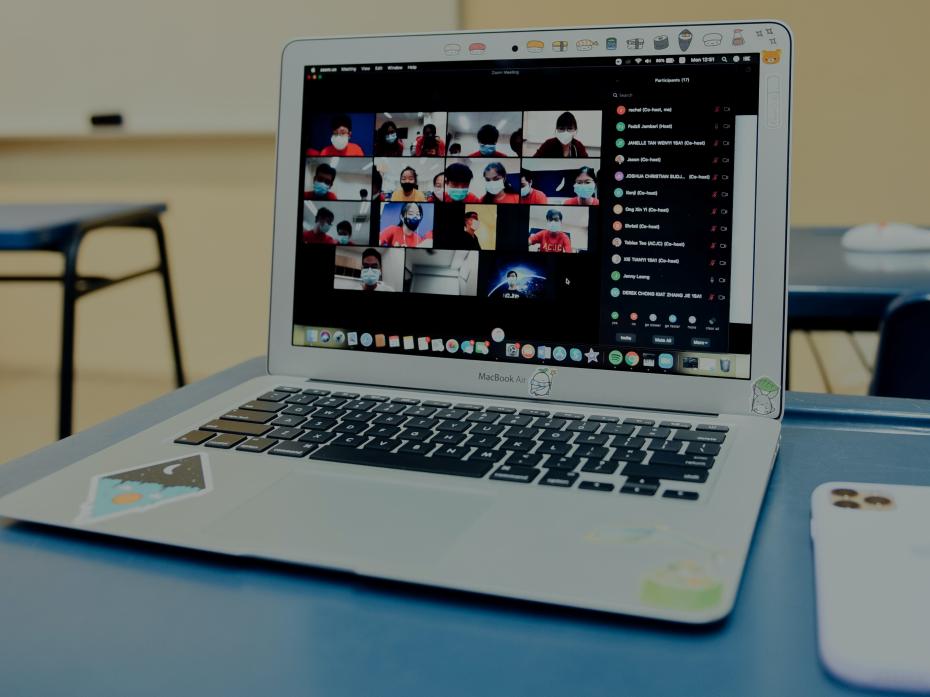Globalisation and technological developments are changing the private and working lives of students and educators. It is now essential to be able to use technology to collaborate in culturally diverse international teams. Collaborative designs such as online co-teaching or peer learning can support this development. But how can we foster virtual collaboration within and across higher education institutions?
To answer this question the German Academic Exchange Service (DAAD) developed the International Virtual Academic Collaboration (IVAC) programme. IVAC gives instructors at German institutions the opportunity to develop virtual exchange courses in cooperation with international partners.
“Virtual exchange involves the engagement of groups of learners in extended periods of online intercultural interaction and collaboration with partners from other cultural contexts or geographical locations as an integrated part of their educational programmes and under the guidance of educators and/or expert facilitators,” wrote Robert O’Dowd of the University of León in 2018.
Since launching in 2020, IVAC has enabled more than 60 German HEIs to cooperate with 165 international partner universities in 56 countries. From October, a further 60 projects will be funded within the IVAC programme. To connect all IVAC projects, the DAAD initiated a community of practice (CoP) so they could learn from each other, expand their knowledge and create synergies.
Initiating a community of practice
During a monthly virtual round table, the IVAC projects discuss topics relating to virtual exchange such as ice-breaking methods, IT tools or the long-term integration of virtual exchange into curricula. This knowledge is collected and circulated in a monthly newsletter. To include the international partners of the IVAC projects, news and events regarding internationalisation and digitalisation of institutions are shared on a LinkedIn group. The community has organised virtual exchange events including the IVAC conference at SRH Berlin, the EduVEstival at the University of Cologne, and the IVAC Festival at the University of Göttingen. The knowledge collected during the community activities is summarised on three levels:
Level of instructional design
“Instructors are not teachers, they received no educational training,” observed one of our participants. Some instructors have expressed the need for further training to boost their skills in instructional design, intercultural competences and digital literacy. If your university does not provide such training, you can benefit from interdisciplinary peer collaboration. For the development of a virtual exchange course at SRH Berlin, a research assistant in psychology supported the creation of icebreaker methods, while lecturers from the respective departments developed the course content and instructional designers provided support with the teaching concept. Part of their design consisted of students jointly developing a team contract in which they defined their project goals and individual roles, and distributed tasks. A code of conduct set out the rules for cooperation.
Ice-breaking methods that strengthen intercultural cooperation are a hot topic. The right methods at the beginning of your virtual exchange can result in more efficient collaboration throughout the course. The students from the University of Hamburg and the Université de Paris used Padlet to introduce themselves at the beginning of their virtual exchange. The benefits of ice-breaking methods were also stressed by the University of Hildesheim and its partner in Pune, India, where students explained the meaning of their names, the special features of their city and what they love about their country.
Level of technology
When selecting and using IT tools, many instructors face one core challenge: how to navigate rigid university guidelines based on data protection and security standards. IT administration often limits the programmes that instructors and students desperately need to effectively collaborate with international partners, and this can affect the quality of the virtual exchange. A similar challenge occurs regarding the choice of a learning management system (LMS). Most German universities use Moodle, Ilias or OLAT. However, these platforms are rarely used internationally and so students are limited to the LMS of the international partner university. The conclusion for instructors who are restricted in choosing their tools is to involve all partner IT administrations at an early stage of development. Or simply let students choose which tools they want to use.
The University of Greifswald and its international partners have learned from their project that students have to be given the time, instruction and means to learn how to use new programmes, collaborative tools and platforms.
Institutional level
Anchoring virtual exchange in strategy, structure and culture is a significant challenge on an institutional level. Structural developments often suffer due to the lack of financial and human resources as well as the extensive coordination processes required between international partners and within their own universities. Integrating shorter IVAC modules of three to six weeks into existing courses and curricula has produced good results.
From a bottom-up perspective, extensive project marketing can be a means to increase awareness at your institution and beyond. The establishment of interdepartmental or interdisciplinary working groups can be one way of increasing awareness. The BTU Cottbus project, as well as the UAS7 Virtual Academy project established working groups consisting of employees from departments such as administration, education, e-learning and marketing to create awareness and develop long-term solutions to embed digital and hybrid teaching.
Projects can also distribute the results of their virtual exchange through good project marketing. At SRH Berlin, an internal newsletter was used to create interest and synergies among professors and employees from other departments who had no direct connection to the IVAC project.
Joining or initiating a community of practice gives you the chance to share and expand your knowledge, create cross-departmental and international synergies, and thereby foster virtual collaboration within and across higher education institutions.
Eugene Schulz and Dagmar Willems are both senior desk officers at the digitalisation section of The German Academic Exchange Service (DAAD).




comment